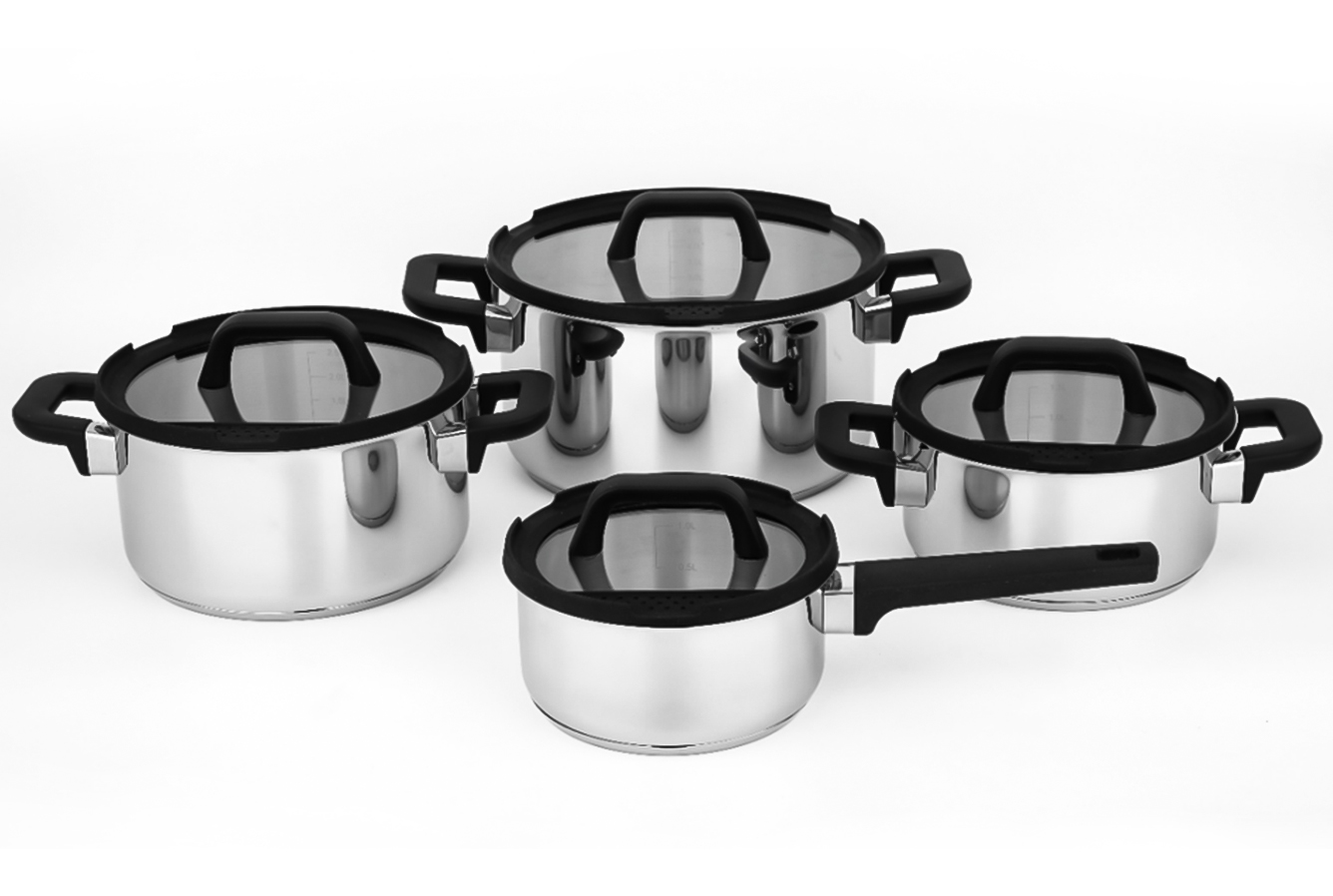
How to clean stainless steel Cookware easily
Stainless steel cookware is the mainstay of your kitchen. Properly cleaning your stainless steel POTS and pans can make them look new for life right out of the box! Without discoloration or stains, no one will know you've cooked countless meals with them. Stainless steel pot cleaning method is here!
Benefits and advantages of stainless Steel cookware
Heat is evenly distributed due to the structure of its conductive metal layer.
Very low maintenance cost, only simple maintenance and cleaning. No need to pre-season or re-season. No potentially toxic coating will crack, degrade, or peel.
Do not react with food Stainless steel cookware is safe for acidic food. It allows you to use it with high-acid food recipes, such as tomatoes, citrus juice, without the risk of leaching out harmful chemicals or making your food taste like metal.
Attractive Appearance With simple cleaning operations, stainless steel can be beautiful for a lifetime.
Easy to clean Just follow the simple steps listed below to keep your stainless steel cookware looking shiny and clean!
The construction is strong, comfortable to use, and much lighter than copper or cast iron.
Perfect for burning stainless steel can withstand high temperatures to make beautifully roasted foods such as steaks or ribs.
The price is reasonable because of its durability rather than having to replace multiple sets of cheaper, low-quality cookware over time.
How to maintain stainless steel cookware
So you've invested your hard-earned money in a set of stainless steel cookware. A huge advantage of stainless steel cookware over other cookware is its long-term durability, even heating and ease of cleaning. Over time, without daily care and maintenance, your cookware may lose its shine and shine, resulting in a dull or dirty appearance. But how do you care for cookware so it lasts and looks new?
Avoid cooker heat shock
For example, thermal shock occurs when you pick up a hot pot and cool it quickly by placing it in cold water. Rapid temperature changes can cause the bottom of the pan to deform quickly. Always allow your cookware to air cool naturally to room temperature before pouring it into water or placing it in water to clean.
Most stainless steel cookware has a solid core made of aluminum or copper bonded to the stainless steel housing. Solid metals were specifically chosen for their ability to disperse evenly and retain heat. The cooling rate of these cores is quite different from that of the stainless steel exterior, which can cause the surface of the bottom of the pan to warp, resulting in undesirable results, such as uneven heating as the stainless steel layer becomes raised or protrudes from the solid core. This can cause your food to be unevenly distributed on the inside of the pan, and your liquid and oil to run to the outside of the pan.
Never put stainless steel cookware in the dishwasher!
Let me be clear! Whether you use stainless steel, nonstick, ceramic coated, copper, or cast iron cookware, never put cookware in the dishwasher!
While your dishwasher is great for washing dishes, cups, glasses, and flatware, it's not at all great for washing POTS and pans. Regardless of that fancy button labeled "POTS and pans," putting your cookware in the dishwasher can greatly shorten the overall life of the product and damage its surface finish and durability.
The environment in the dishwasher can be very harsh on the surface treatment of cookware. Dishwashing chips, pods, powders, or gels contain harsh chemicals used to dissolve food. The chemicals that make your plate shiny and clean can erode the surfaces of your cookware, causing the shiny steel surfaces we all love to fog or fade. Dishwasher soap compounds can also cause premature oxidation of the rivets or screws holding the handles in place.
Cleaning methods for stainless steel cookware
Cleaning stainless steel cookware is simple, and you can use what you may already have, such as soap, vinegar, baking soda, and oil. More alternatives include ketchup or even tartar cream (said to be a chef's favorite).
Quick cleanup: Boil one cup of vinegar in a saucepan, then turn off the heat and add baking soda. It bubbles up. Let it cool a little, but while it's still hot, wipe it down with a soft sponge.
One thing to remember is to never use a grinding sponge (such as steel velvet) or it may damage the surface.
Extension: How to remove rust from stainless steel
Mix water and baking soda to make a thick paste. Spread over your previously cleaned stainless steel surface. Let it sit for about an hour, then wipe the rusty area with a toothbrush. Rinse with water only and dry completely. Or... Use a rust remover for a simpler, modern solution.
by NEOKAY on 23-01-14







